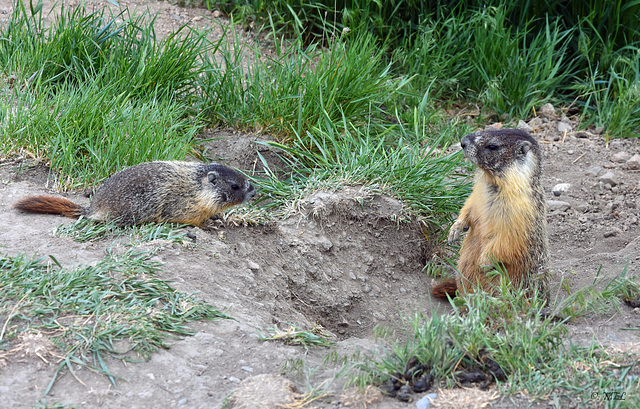Der Zaun am Emerald Lake, Yoho National Park, Cana…
Canada Place
Sea Otter in Vancouver Aquarium
Bow River/Sea im Banff National Park
Der Zaun in Vancouver Downtown
Lake Louise
Johnson Street Bridge, Victoria
Der Zaun im Stanley Park, Vancouver
Emerald Lake, Yoho NP, Canada
English Bay, Vancouver
Science world, Vancouver
Vancouver Convention Centre,
Der Zaun im Nirgendwo - eine Strasse durch den N…
Gallagher Lake, Okanagan Valley
Der Wächter
Der Zaun in Capilano Suspension Bridge
Mt. Robson Übernachtung
Lake Louise mit Fairmont Hotel
Lake Louise
Mt. Robson, BC, Kanada - PIP
Capilano Suspension Bridge, Vancouver
Der Zaun am Capilano Cliffwalk, Vancouver
Capilano Suspension Bridge, Vancouver
Weinberge im Okanangan Valley, BC, Canada - PIP
Lillooet Lake
Vancouver
Totem in Victoria
SS Sicamouse in Penticton
Die Bank und der Zaun in Port Alberni
Seeadler über Sechelt
Canada Place und Convention Centre
Kolibri in Sechelt
Etwas zum Abkühlen ...
Inside house
Der Zaun in Revelstoke, Columbia River
Auf der Fähre nach Nanaimo
Der Zaun in Coal Harbour, Vancouver
Möge das Licht mit dir sein ....
Die Bänke in Whistler
Galagher Lake
Der Zaun in Sechelt
Die Brücke für einen neuen Anfang ...
The laughing men
Vancouver Aquarium
Der Zaun in Princeton
1/500 • f/8.0 • 66.0 mm • ISO 560 •
NIKON CORPORATION NIKON D7200
Location
See also...
Keywords
Authorizations, license
-
Visible by: Everyone -
All rights reserved
-
376 visits
Konferenz der Murmeltiere


Die Murmeltiere (Marmota), in der Schweiz auch Munggen, in Oberbayern und Österreich auch Mankei genannt, sind eine aus vierzehn Arten bestehende Gattung bis zu 50 Zentimeter langer Echter Erdhörnchen (Marmotini), die in Eurasien und Nordamerika verbreitet sind. Bei den Murmeltierarten handelt es sich primär um Bewohner kalter Steppen. Das heute nur noch in Gebirgslagen jenseits der Baumgrenze lebende Alpenmurmeltier kam während der pleistozänen Eiszeiten im europäischen Tiefland von den Pyrenäen bis zur Ukraine vor. Es fehlte dagegen in den mit einer dicken Eisschicht bedeckten Alpen. Mit dem Ende der Eiszeit boten nur noch die hochalpinen Lagen der Alpen dieser Art geeigneten Lebensraum (Eiszeitrelikt). Murmeltiere können bis zu 15 Jahre alt werden.
Marmots are large squirrels in the genus Marmota, of which there are 15 species. Some species live in mountainous areas, such as the Alps, northern Apennines, Carpathians, Tatras, and Pyrenees in Europe and northwestern Asia; the Rocky Mountains, Black Hills, Cascades, Pacific Ranges, and Sierra Nevada in North America; and the Deosai Plateau in Pakistan and Ladakh in India. Other species prefer rough grassland and can be found widely across North America and the Eurasian steppes. The similarly sized, but more social, prairie dog is not classified in the genus Marmota but in the related genus Cynomys.
Marmots typically live in burrows (often within rockpiles, particularly in the case of the yellow-bellied marmot), and hibernate there through the winter. Most marmots are highly social and use loud whistles to communicate with one another, especially when alarmed.
Marmots mainly eat greens and many types of grasses, berries, lichens, mosses, roots, and flowers.Q: Wikipedia
Translate into English
Marmots are large squirrels in the genus Marmota, of which there are 15 species. Some species live in mountainous areas, such as the Alps, northern Apennines, Carpathians, Tatras, and Pyrenees in Europe and northwestern Asia; the Rocky Mountains, Black Hills, Cascades, Pacific Ranges, and Sierra Nevada in North America; and the Deosai Plateau in Pakistan and Ladakh in India. Other species prefer rough grassland and can be found widely across North America and the Eurasian steppes. The similarly sized, but more social, prairie dog is not classified in the genus Marmota but in the related genus Cynomys.
Marmots typically live in burrows (often within rockpiles, particularly in the case of the yellow-bellied marmot), and hibernate there through the winter. Most marmots are highly social and use loud whistles to communicate with one another, especially when alarmed.
Marmots mainly eat greens and many types of grasses, berries, lichens, mosses, roots, and flowers.Q: Wikipedia
, Gudrun, Ulrich John and 2 other people have particularly liked this photo
- Keyboard shortcuts:
Jump to top
RSS feed- Latest comments - Subscribe to the comment feeds of this photo
- ipernity © 2007-2024
- Help & Contact
|
Club news
|
About ipernity
|
History |
ipernity Club & Prices |
Guide of good conduct
Donate | Group guidelines | Privacy policy | Terms of use | Statutes | In memoria -
Facebook
Twitter

Erika+Manfred club has replied to Erhard Bernstein clubSind ja niedliche Racker, noch nie gesehen, nur kurz im Film.
VG, Uwe
Erika+Manfred club has replied to uwschu clubVG, erika
Erika+Manfred club has replied to Ulrich John clubHab einen schönen Tag
Erika+Manfred club has replied to menonfire clubViele Grüße, erika
Excellent image, thank you very much for posting to Fur, Fin and Feather.
Greetings from Frankfurt/Main
Sign-in to write a comment.